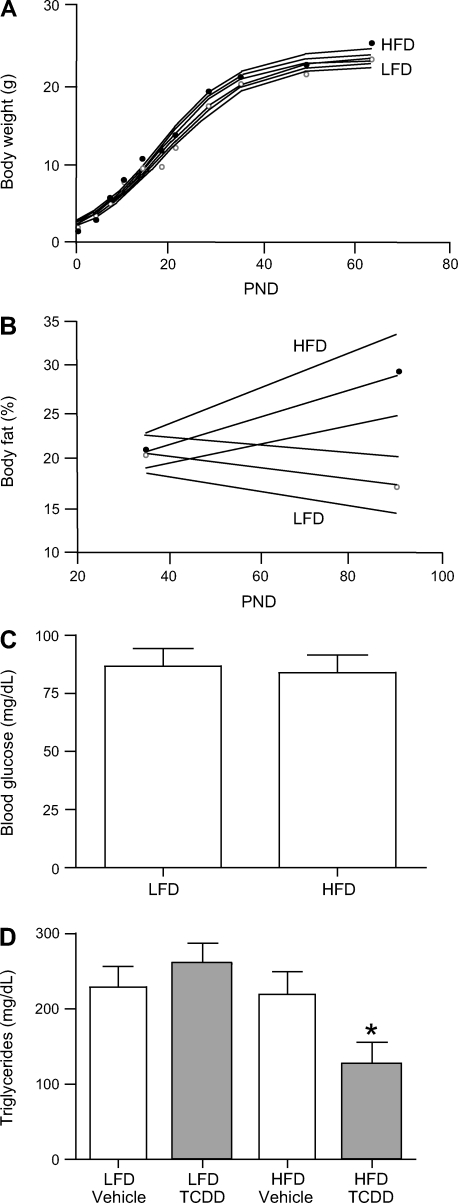Fig. 3.
Metabolic syndrome-related phenotypes in PyMT mice. HFD increases body weight (A), percent body fat (B), but not blood glucose (C; n = 17 and 18 mice for LFD and HFD, respectively). D: triglycerides are altered by HFD and 2,3,7,8-tetrachlorodibenzo-p-dioxin (TCDD) (means ± SE; n = 6, 6, 5, and 5 mice for LFD + vehicle, LFD + TCDD, HFD + vehicle, and HFD + TCDD, respectively). In A–C, longitudinal models are depicted per diet with 95% confidence intervals, and diet-based mean is plotted for LFD (○) and HFD (•). For body weight measurements at PND 0, 4, 7, 10, 14, 18, 21, 28, 35, 49, and 63, there were 17, 17, 17, 17, 17, 11, 17, 12, 17, 15, and 12 mice on LFD and 18, 18, 18, 18, 18, 18, 15, 13, 18, 10, and 8 mice on HFD, respectively. For body fat at PND 35 and 90, there were 16 and 5 mice on LFD and 18 and 2 mice on HFD, respectively.

